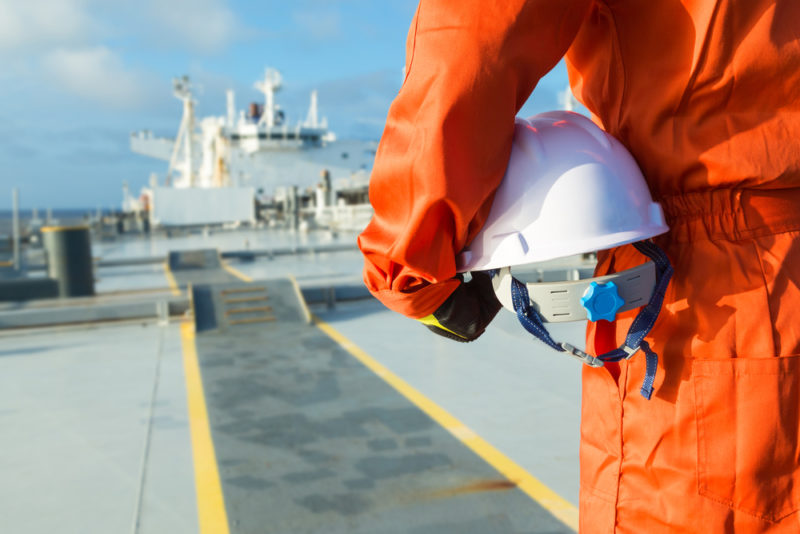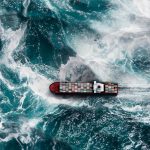n the long run, alternative fuels are expected to help shipping achieve net zero greenhouse gas (GHG) emissions by 2050. However, the inescapable fact is that the majority of the current world fleet cannot be retrofitted to run on alternative fuels, meaning they will rely on fossil fuels for the rest of their economic lives. Even newbuildings fitted with dual-fuel engines will likely continue using fossil fuels for a considerable time due to the high cost and limited supply of alternatives.
A possible solution currently under serious consideration is the fitting or retrofitting of onboard carbon capture (OCC) equipment, enabling carbon dioxide to be captured, transported and stored underground or utilised.
Growing interest
OCC remains a nascent technology. Its deployment is still in the low tens of vessels, but regular announcements would suggest that interest within the shipping industry is growing. These vary from conducting feasibility studies to installing and testing OCC equipment onboard. Five examples illustrate the progress being made:
- In spring 2024, Evergreen Marine Corp announced that it had installed an OCC system onboard the Ever Top, a 13,806 TEU containership. CO2 captured from the ship’s exhaust gas emissions was offloaded to a shore facility and recycled. It was reported that the captured CO2 had reduced the vessel’s annual CO2 emissions for the CII assessment.
- In early 2025, Solvang will install an OCC system onboard the 21,200 cbm LPG carrier Clipper Eris. The CO2 in the exhaust gas is separated, liquified through refrigeration, and then stored on deck. Capture rates are expected to be in the range 70-80 % from the main and auxiliary engines, based on a pilot system operated by Wartsila at its Moss test facility.
- Project REMARCCABLE (Realising Maritime Carbon Capture to demonstrate the Ability to Lower Emissions) has seen several parties collaborating to develop an OCC system for use onboard a medium range tanker, the Stena Impero. The study has suggested a 19.7% annualised net CO2 reduction at a 9.2% fuel penalty.
- In 2024, Lloyd’s Register granted its first-class notation for OCC solution by Value Maritime to be installed onboard the tanker M/T Pacific Cobalt, operated by Eastern Pacific Shipping, with estimated CO2 capture up to 40%.
- Lastly, by contrast with many one-off pilot projects, the OCC system developed by Value Maritime has seen multiple installations. MOL, Eastern Pacific Shipping, JR Shipping and Solvang have all installed their system. It filters and passes the exhaust gases through material which absorbs the CO2 in a removable container. The container is then lifted off the vessel and the material heated to release the CO2, which can then be put to alternative use.
The Mærsk Mc-Kinney Møller Centre for Zero Carbon Shipping has supported OCC technology, stating in a 2022 report that while it was technically feasible and capable of reaching widespread commercial availability, it increases fuel consumption and comes with high carbon abatement costs. They also noted that it was most suited to newbuilds due to space and modification needs, and that large tankers offer the best business case given the high initial CAPEX.
The regulatory landscape
So far, the regulations for OCC are limited. There are currently no IMO technical requirements or standards in place, and the IMO is working on developing a regulatory framework for the use of OCC systems.
The broader framework for Carbon Capture and Storage (CCS) is restrictive. Pursuant to the London Convention 1972 and London Protocol 1996 the international transportation of captured CO2 for the purpose of subsea injection is only permitted where the relevant exporting and importing states have concluded a bi-lateral or multi-lateral agreement to this effect. EU Directive 2009/31/EC (the CCS Directive) encourages the use of bilateral agreements to enable CCS, but this does not cover the transport of CO2 by ship between EU countries.
OCC involves the capture of CO2 onboard a vessel and its temporary storage before offloading at a reception facility. This may be directly at an injection location (in which case it would be subject to the London Convention/Protocol), or to a larger storage facility (from where it would then be transported to an injection location). In the latter case, it is questionable whether the captured CO2 would be classified as ‘cargo’ whilst onboard the vessel and so subject to the HNS Convention (once it is in force). Assuming it is carried as a liquified gas, the captured CO2 would need to be stored in Type C liquified gas tanks under the IGC Code.
Factors for shipowners to consider
When assessing whether to invest in an OCC system, shipowners and operators might wish to consider the following factors:
- The available space and potential loss of cargo space taken up by the OCC units
- Some vessel types may need hull reinforcement as well as adaptations to the navigation bridge to satisfy the visibility criteria with the equipment fitted
- Impact on energy consumption. The equipment will affect the main engine’s back pressure, and require additional auxiliary power, resulting in overall increased energy consumption
- The efficiency of the system – currently estimated capture rates for onboard carbon capture vary between 11% and 75%. Higher capture rates generally have higher energy demands, which may result in lower overall reductions in CO2 emissions.
- The availability of offload and storage facilities – whilst a GCMD study indicates low port readiness, the ports of Antwerp, Gdansk, Dunkirk, Gothenburg, Hamburg are developing facilities and infrastructure to handle CO2.
Beyond these factors are the significant capital costs, operational costs, and lost trading time whilst the equipment is fitted. These are relevant to the question of whether the shipowner can hope to achieve a financial benefit from fitting an OCC system in the absence of regulatory incentives.
Incentivizing OCC
The OCC system can significantly reduce a vessel’s carbon emissions, though the regulations around its use are still evolving. The IMO plans to include OCC in its Lifecycle Assessment (LCA) Guidelines, and MEPC 81 has begun developing a regulatory framework, with its first report released in December 2024. The impact on a vessel’s CII rating is already evident – Ever Top successfully deducted captured CO2 from its emissions, and the Stena Impero project estimates that an OCC system could extend a vessel’s “C” rating (or better) by as much as nine years.
Currently, only the EU ETS offers financial incentives for OCC, reducing the required CO2 allowances for emitted carbon. Other emissions trading schemes may follow suit, with the UK considering similar incentives. While FuelEU Maritime does not yet account for OCC, this will be revisited in 2026 as the technology becomes more widespread.
Safety challenges
As with any new technology, the full risks of OCC systems are still uncertain. However, key safety concerns include:
- Personnel exposure to hazardous chemicals and extreme-temperature fluids in the OCC system
- Suffocation in the event of a leak of captured CO2 from the distribution and storage systems
- Explosion risks from pressurised CO2 tanks.
Whilst classification societies have published guidance, no specific statutory regulations currently address OCC safety onboard vessels. Still, these systems are in use, and appropriate crew training is essential for safe and effective operation.
We are here to help
To help Members and clients in their decarbonisation journey, Gard is engaging with maritime industry organisations to address the risks arising from the transition. This includes our partnership with the Global Centre for Maritime Decarbonisation (GCMD) in Singapore on projects aimed at OCC solutions, and concept studies exploring the measures required for safe offloading of captured CO2.
At Gard we understand that reducing ships’ emissions is a complex exercise bringing in new risks for different segments. Gard’s Hull and Machinery insurance products respond to physical damage to the new technology, while our P&I liability products respond to third party liabilities arising from use of the technology. In some scenarios, more customized and tailor-made solutions may be required. Gard’s underwriters and our Product Team are available to discuss your unique risks and relevant insurance solutions.
Source: GARD





